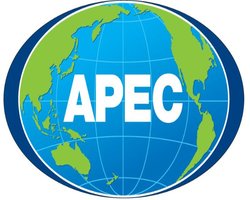The Asia Pacific economic recovery is gaining ground, but more focus is required on improving higher production efficiency, supported by a more innovation-friendly business climate to help the economies secure medium- and long-term growth and job creation, says the latest APEC Economic Trends Analysis report.
APEC stands for Asia-Pacific Economic Cooperation, the largest economic grouping in the world.
Asia Pacific economic recovery expected to accelerate
Dr Alan Bollard, Executive Director of the APEC Secretariat, said:
“Economies in the APEC region are recovering and we expect this to accelerate. Our priority now is to ensure that the region moves to a higher medium-term growth path. To achieve that, APEC economies are laying the groundwork for a rebound in trade and productivity.”
Approximately half of global trade and 60% of total worldwide GDP (gross domestic product) comes from the 21 APEC economies. Their economies are forecast to grow by:
- 4.2% in 2014, compared to 3.7% in 2013
- and then by 4.4% in 2015.
Some obstacles holding back economic performance
However, economic performance across the Asia-Pacific region is being held back by post-crisis uncertainty and macroeconomic imbalances linked to the global financial crisis.
Dr Bollard explained:
“APEC trade is at high levels in global terms but exports remain sluggish and are not contributing to growth in an optimal way. At the same time, the region is facing the twin challenges of decelerating labor productivity and employment growth.”
Report lead author, noted Quynh Le, a macroeconomist at the APEC Policy Support Unit, said:
“Production efficiency has dropped among firms in emerging and developing economies while companies in industrialized economies have increasingly turned to layoffs. Economic turnaround is a pre-requisite for a revival in productivity and employment but that in and of itself may not be sufficient.”
“Sustainably raising productivity and ensuring robust job creation requires higher production efficiency based on greater innovation across different business sectors. Technological innovation, for example, can cultivate markets for new products and, in turn, seed employment opportunities and expand production frontiers.”
Encouraging greater private sector R&D
According to the authors, the APEC member nations are working together with the private sector to secure a business environment that incentivizes companies to dedicate more resources to research and development.
In a drive to encourage R&D, cross-border movement of human capital that drives innovation has been facilitated. Legislation that reduces obstacles to private investment has also been implemented.
It is crucial that APEC economies establish a properly-functioning intellectual property rights system that legally protects innovators. They also need to introduce fiscal and taxation instruments that encourage private sector R&D investments, the authors added.
When APEC Trade Ministers and agency officials gather in Qingdao, China, in May, they will have the opportunity to advance such measures.

